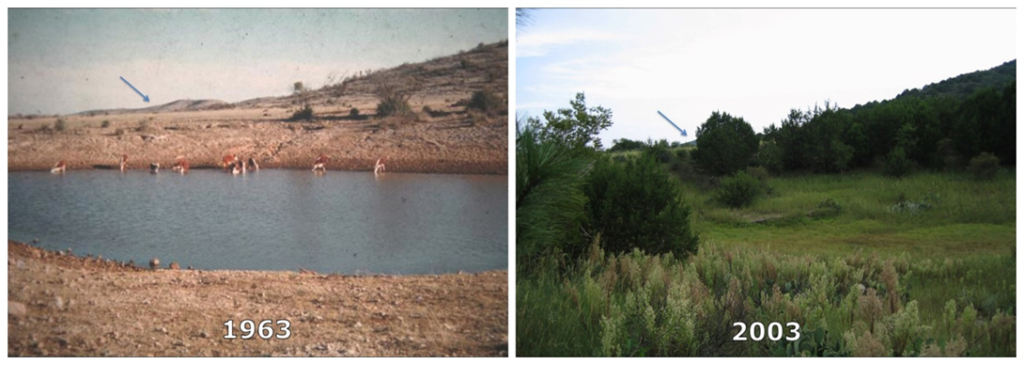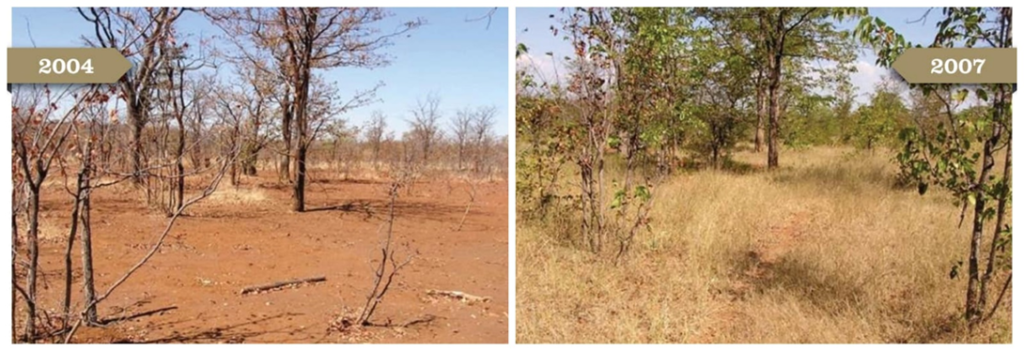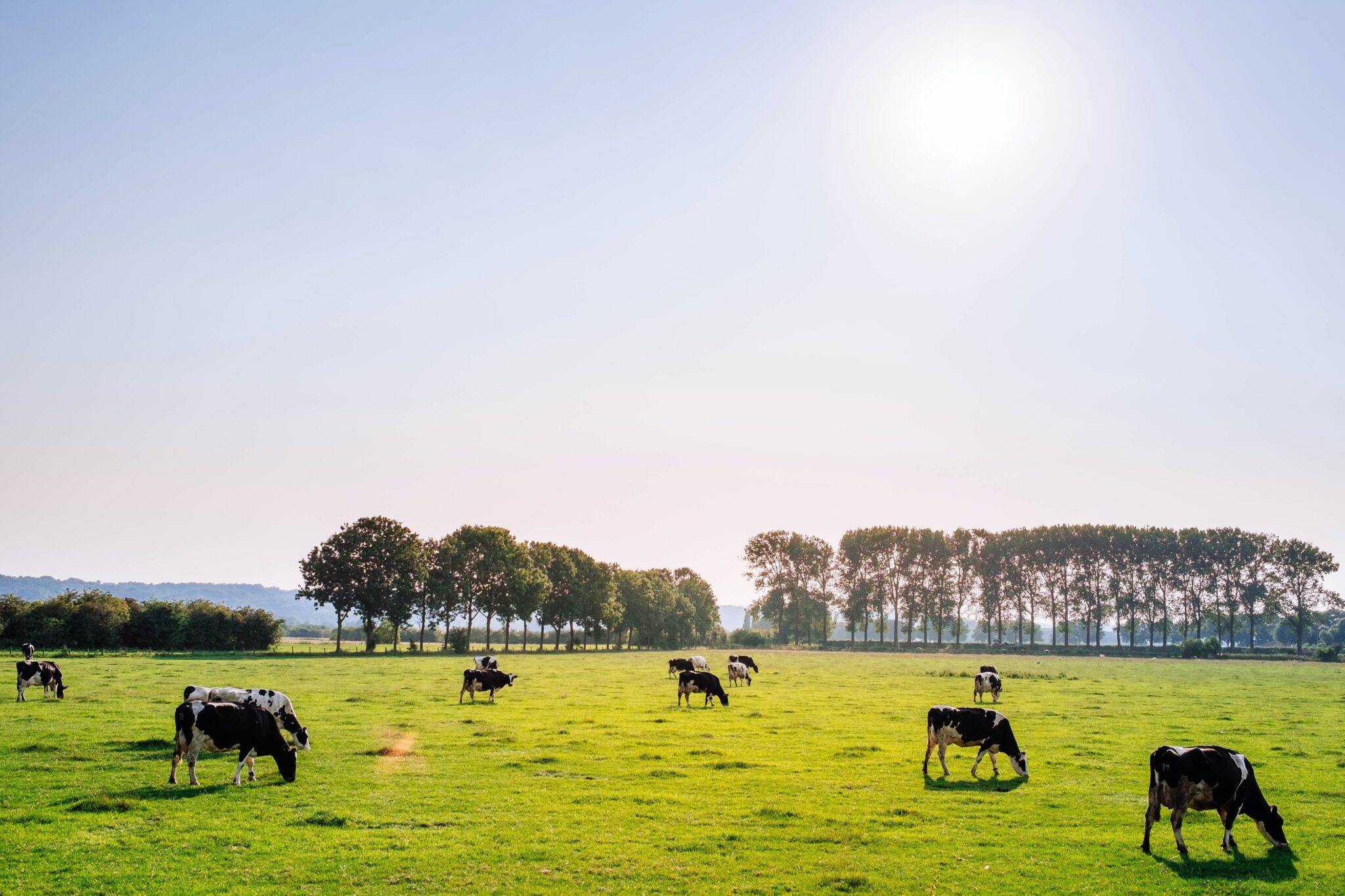Thanks to the ardent and, dare I say, aggressive advocacy of the environmentalists of the past few decades, the notion that farming and, more specifically, livestock farming has a huge role in warming up the planet and accelerating global warming, is more or less internalized by the public.
The mainstream opinion holds that livestock and cattle are responsible for producing methane gas in the form of flatulence that enters the atmosphere as a heat-trapping agent. The figure lies above 16% of all greenhouse gas emissions. In case you’re unsure about the gravity of that statistic, it’s pretty serious.
For the most part, this idea is in absolute coherence with the scientific literature and is approved by many pre-eminent figures in the environmental science community. However, it is often quoted out of context, with no regard to the original apparatus of the study, inevitably leading the public to wrongfully and wholly demonize a very important part of our social and biological ecosystem: cattle.
As part or member species, they are so crucial to the sensitive ecosystem around us that their removal from the ecological scene has created problems of a scale so grand that they now threaten the very survival of humankind.
With increasing populations, declining soil health, dwindling wild and marine life, surging rates of infection outbreaks and aggravating geopolitical situations across the globe, the scientific community has spent the better part of the last decade looking for the Holy Grail of ecology i.e., finding harmony between nature and man in such a way that allows for mutual growth.
Multiple attempts have been made to delay the sentence of a perpetually altered planet in recent years. While some of them have brought transient hope, none have been more promising than this method. They key difference to be noted here is that while the rest of the methods have a very artificial, man-made touch to them, this approach is based 100% on mimicking nature. And this is what sets it apart from the rest: absolutely no chances of unwanted and unknown consequences since this is what evolution had intended in the first place.
Meet the cast members
It would be absurd to think that the cows, sheep or goats can alone bring about the change. The second player in this process is the grasslands; think of the American Prairie, the Argentinian Patagonia, or the vast Mongolian Steppe.
Despite being separated by thousands of miles of terrain and ocean, all of them have something in common: they all have perennial grasses. They are all built to hold millions of grazing herbivores and are infinitely more valuable to us as carbon-sequestering warehouses than any forest on Earth. Allow me to explain.
Why Grasslands?
It is common knowledge that increasing vegetation in a small locale considerably affects the local weather positively. It increases the rate of transpiration in the land, thus bringing down temperatures and creating greater odds for rainfall. This process is known as changing the microclimate.
But when the microclimates of hundreds of adjacent locales are changed, the change appears in the macroclimate. Done on a large enough scale, this method can reliably modify the planetary climate in a suitable time span.

To change the microclimate of an area, vegetation must be introduced there. Towards this end, we have two means, forests and grasslands. The obvious choice would be and has been forests. However, forests are slow to grow and require a lot of resources to ensure survival in their early years, including a generous supply of water, which can become especially problematic in areas that already face water shortages. Forests also sequester carbon from the air into biomass at a relatively slow pace when compared to grasslands.
Forests are planted with considerable spaces left between adjacent trees, leaving the ground surface bare, allowing water to run off and carbon to escape the soil. Further, forests expand with excruciating tardiness in nature and given the rate at which climate change outstrips any green growth; forests are a losing gamble.
Another attempt at dealing with trees is to artificially plant them over large swathes by hand, which is not only not time-efficient and economical but also puts a significant burden on the water supplies in the area, which makes it impractical in areas where it is needed most. This is precisely why most of the third world is turning dry and dusty.
Enter grass! To count off some of the advantages it has over forests: It is both annual and perennial, so it grows very quickly into its mature form. I’m talking about a mere couple of weeks to reach its raging adulthood. It either scatters its seeds (quite efficiently) at the end of every season or simply grows back from any roots left from the last season, thus eliminating the need for replanting ever again. It is very aggressive in spreading to its surrounding and will happily annex any land available, even from other weaker strains of grasses.
This takes care of the expansion problem of the forests. Contrary to forests, grasses are tough right from birth and do not require to be pampered with a generous water supply from canals or rivers. They make do very well with the season’s rain.
And when rain does come around, the blades of the grass covering the ground surface prevent water run-off and increase the underground water reservoir by absorbing the rainwater. In this way, grass quite literally turns the tables on the forests by increasing the water available at the end of each season.
The cherry on top is that while forests can sequester up to 27 tons of carbon dioxide equivalents per acre in the form of biomass, grasslands sequester 49 tons of carbon dioxide equivalents per acre.
Camera, Lights, Action!
So, here’s how it’s supposed to work. Grass sprouts just in time for the rainy season. It gets a week to bask in the glory of its youth before a vast, roving herd of cattle (cows, buffaloes, sheep or even goats) arrive at its doorstep, huffing and puffing and looking very hungry.
They begin making short work of the grass, but they do not linger long enough to uproot it from the ground since they are exposed to potential predators. In a more modern setting, the role of the predator can be filled by a particularly bad-tempered shepherd or an enthusiastic border collie. The herd keeps moving, and the lower parts of the grass live to see another day.
Grazing off the top of the grass allows it to grow back again in a month or so instead of just turning dry and yellow. But the herd does not depart without leaving a considerable tip for the grass. An average cow drops from 50 lb. to 100 lb. of manure daily.
And that’s just one cow. Imagine the aftermath of an entire herd. Needless to say, despite the unattractive image it conjures up, this natural fertilizer enriches the land with all the necessary minerals and microflora and sends the local vegetation into a hyperdrive.

As the first pillar of the food chain is strengthened, the wildlife returns to the region and the biomass output of the land multiplies several-fold. And as a parting gesture, the herd tramples any drying grass, which reduces the dead and dying grass and levels the blades onto the ground, creating a perfect platform for rainwater absorption. The herd moves on to a fresher patch of grass and does not return to the original until it is fully grown again.
Trampling the drying grass further produces positive results as it reduces the need for fire to clear out a plot for next year’s growth. An estimate put the amount of pollution released by burning one hectare of grassland equivalent to fumes from 6000 cars.
To put it in perspective, every year, more than 1 billion hectares of land are burned in Africa alone. Replacing fire with cattle would not only take care of the old growth but also retain the organic matter in the top layer of the soil, saving the land from mineral and nutrient deficiency.
Tried and tested
This method is not very new. In its modern understanding, it has existed for more than three decades and has been implemented by its pioneer Allan Savory in over 21 million hectares of degrading land with incredible success.
But in a world where one-third of its land or 400 million hectares are desertifying simply because the herbivore and the grassland have been divorced, 21 million is just 5.2%. This goes to say that while 21 million may be a good start it is certainly not a celebratory milestone. And getting here was not without its tragedies.
Allan Savory recalls his young self with his orthodox ideas about wildlife and its place in an industrializing world; he recalls the time he suggested to an African government that the reason the land was deteriorating was, simply put, “too many elephants”.
Seeing no resistance from the scientific community, the government had over 40,000 elephants shot and killed in the next few years. Savory would go on to call this “the saddest and greatest blunder of [his] life”.
Seeing as removing the indigenous animals from their habitats only worsened the problem instead of solving it. Following that, Savory has dedicated his life to finding a better, more humane, more economical and more “natural” way around this problem. And this method of rotational grazing, or “Holistic Planned Grazing” as Savory calls it, is his magnum opus. And the results that it has achieved are nothing short of miraculous.



Waiting for the stars to align?
The question you may ask is, if it works well, why is it not everywhere already? This is the same question Allan Savory and others who have followed suit want to ask of everyone else. The YouTube video of Savory explaining his science has garnered over 5.7 million views, yet very few responses have been received from the international stage.
Part of the problem lies in the increasingly separating communities within the landscape. For Holistic Planned Grazing to work, it really needs to mimic nature; having a vast area of grassland and herds of up to tens of thousands of animals are optimal.
This is where private ownership and general refusal to cooperation owing to personal interests create hindrances in achieving the desired outcome. Communities, such as the Maasai in Kenya, where people have overcome their selfish interests for the greater good of the region, have not only seen greener pastures but also healthier livestock, higher water table, fewer droughts and more wildlife in return.
This practice undoubtedly pays great dividends far into the future, but the question here is of coming together actually to implement this. The onus is no longer on science – it has delivered its research – but rather on the international community to make sure the wisdom is followed through. The cow has exonerated herself; it is now our turn to meet it halfway.
References
- https://sentientmedia.org/how-does-livestock-affect-climate-change/
- https://www.planet-tech.com/blog/land-restoration-holistic-management
- https://www.epicprovisions.ca/savory-institute/
- https://www.youtube.com/watch?v=vpTHi7O66pI&ab_channel=TED
- https://ata.land/land-to-market-changing-farm-consume/
- http://fullspectrumbiology.blogspot.com/2013/05/allan-savory-decertification.html
- https://savory.global/
- “Fiscal Policy To Mitigate Climate Change: A Guide For Policymakers” Robert Mendelsohn, Yale University, United States & Roger Sedjo, Resources For The Future, United States & Brent Sohngen, Ohio State University, United States
- https://www.youtube.com/watch?v=4Z75A_JMBx4&list=TLPQMDUwNTIwMjPl6d_ZZuPFOQ&index=3&ab_channel=TEDxTalks
Also Read: ROLE OF GENETICS IN INFECTIOUS DISEASE SPREAD

Haseeb Irshad is a neophyte connoisseur of academic writing, whose interests range from medicine, bio-molecularity, and environmental and ecological studies to pop-culture TV and films. He also indulges in fiction and religious studies from time to time.

